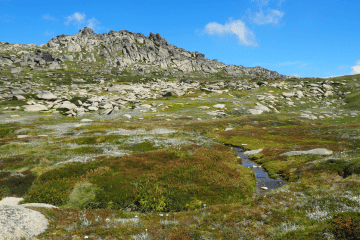The Invasive Species Council welcomes the Minns government’s commitment to continue the removal of feral horses from Kosciuszko National Park and across NSW, including through aerial shooting.
The commitment to continue aerial control of horses, as well as other invasive animals, as a way of protecting the natural environment was included as part of the NSW government’s just released official response to the recommendations of a recent parliamentary inquiry into aerial shooting of feral horses in Kosciuszko National Park.
‘This is a welcomed response and a positive signal that feral horse control, including through aerial shooting, is becoming a routine part of protecting our native wildlife and precious places in NSW,’ Invasive Species Council Advocacy Director Jack Gough said.
‘This parliamentary inquiry showed clearly there is broad support across the Liberals, Labor, Greens and independents for sensible action to urgently reduce the number of feral horses trashing and trampling Kosciuszko National Park.
‘For the first time in 2 decades, we are finally seeing our sensitive National Parks healing from the destruction of feral horses. The recent successful control programs in Barrington Tops and the Blue Mountains World Heritage areas are testament to the commitment and leadership on this issue from the Minns Government.
‘Aerial culling by highly trained professionals is the only viable way of reducing numbers and saving the national park and our native animals that live there.
‘We expect removals to continue professionally, safely and humanely by the dedicated national parks staff.
‘No one likes to see animals killed, but the sad reality is that we have a choice to make between urgently reducing the numbers of feral horses or accepting the destruction of sensitive alpine rivers, and the decline and extinction of native animals and their homes.
‘The next step will be for all sides of politics to come together to repeal the ridiculous law that still protects feral animals over our native wildlife in Kosciuszko National Park.’
Media enquiries: (02) 8006 5004
Photos and other multimedia to accompany this story are available here.
Background notes:
- The NSW government has supported all the recommendations of the parliamentary inquiry into the aerial shooting of feral horses in Kosciuszko National Park. The final report, which was supported by Liberal, Labor, Greens and Shooters and Fishers Party members of the committee, found:
- The count methodology used by the NSW government to count horses in Kosciuszko National Park uses current global best practice methods.
- Aerial shooting is the only method that allows the NSW government to reach the legislated target of 3,000 horses in the park by the 2027 deadline. All other methods are unable to reach the target number by the deadline.
- There is no clear evidence that any breaches to animal welfare have occurred.
- The National Parks and Wildlife staff have often faced terrible abuse online and in the community.
- The parliamentary report also recommended:
- That aerial control of horses, as well as other invasive animals, should continue in NSW as a way of protecting the natural environment.
- The NSW government should have an appropriate, independent third-party review of the Standard Operating Procedure regularly to ensure it continues to reflect best practice and is as robust and humane as possible.
- In NSW, feral horses are protected at the expense of native wildlife under the Kosciuszko Wild Horse Heritage Act 2018, which requires a ‘heritage herd’ of feral horses to be maintained in Kosciuszko National Park.
- The current management plan for feral horses, which was introduced by the former Liberal government, imposes a legal obligation on NSW National Parks to carry out control operations to reduce the feral horse population to 3,000 across 32% of Kosciuszko National Park by 2027.
- The Australian Senate inquiry report into the Impacts and management of feral horses in the Australian Alps was released in October 2023 and recommended that:
- Aerial shooting should be adopted for control of feral horses in NSW (adopted by the NSW government in October 2023).
- Habitat degradation, competition and disease transmission by feral horses should be listed as a Key Threatening Process under national environmental law (Agreed to in principle in federal government response).
- The federal government should provide additional funding to assist NSW and Victoria to control feral horses (Not yet agreed to by the Albanese Government).
- The Senate committee also found that it ‘is not currently possible for both the EPBC Act and the NSW Kosciuszko Wild Horse Heritage Act 2018 to be complied with’ and that ‘the committee considers that there may be an issue relating to the constitutional validity of the NSW Wild Horse Heritage Act to the extent it is inconsistent with the EPBC Act.’
- National Parks staff undertake feral horse control work professionally, humanely, and safely. This has been confirmed by two independent animal welfare reviews of NSW feral horse control operations which found that:
- Animal welfare outcomes are prioritised and are better than predicted, as confirmed by independent veterinary observations.
- There was no evidence of non-kill shots having been taken.
- Standard Operating Procedures are rigorously followed, and all personnel have welfare as a priority.
- Australia’s alpine plants and animals did not evolve with heavy, hard-hoofed feral horses. They are not native and cause enormous damage to sensitive habitat, degrading and polluting alpine streams and driving native species towards extinction.
- The federal government’s Threatened Species Scientific Committee have described feral horses as an ‘imminent threat’ to the Albanese government’s commitment to prevent new extinctions of plants and animals and stated that feral horses ‘may be the crucial factor that causes final extinction’ for 12 alpine species.
- The 2023 state election demonstrated that having a strong position on feral horse management in Kosciuszko was electorally popular. There were strong swings to candidates and parties that took firm positions on feral horse control, most notably in the seats of Wagga Wagga and Monaro.
- Trapping and rehoming of feral horses has been used in Kosciuszko National Park for well over a decade but has consistently failed to reduce the population, has delayed meaningful action and is expensive. There are too many feral horses in the Alps and not enough demand for rehoming for it to be relied upon for the reduction of the population.
- Fertility control as a management tool is only effective for a small, geographically isolated, and accessible population of feral horses where the management outcome sought is to maintain the population at its current size. It is not a viable option to reduce the large and growing feral horse population in the vast and rugged terrain of the Australian Alps.









